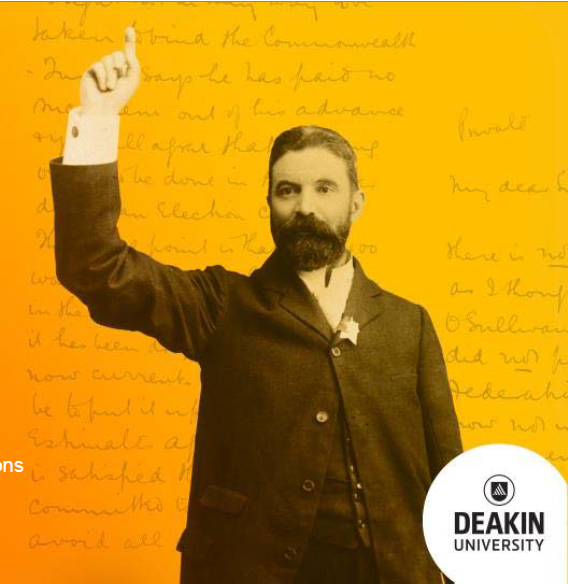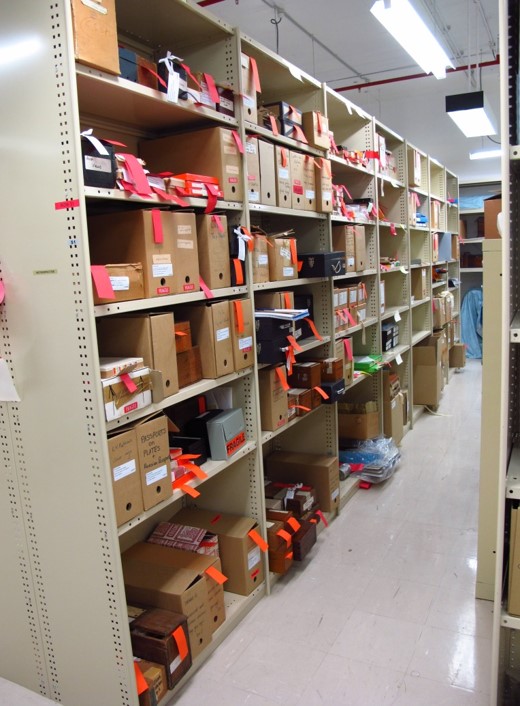The Persistence of the Real
Art Gallery of New South Wales, Sydney, Australia.
30 November - 3 December 2016
Conference Theme
Digital opportunities and challenges for art libraries have been a recurring theme at ARLIS/ANZ conferences over the last 20 years. Papers have been given on projects to convert valuable card files and indices to digital databases. We have reflected on the changing nature of library spaces and the impact of emerging technologies on their services. There have been a number of presentations on digital initiatives in preservation and on the wide variety of issues around putting collections online.
At the 2014 Arlis/ANZ conference in Auckland, however, there emerged a renewed interest in the physicality of art libraries, from their collections of books, periodicals, artists’ books, ephemera and archives, to the physical space of libraries themselves and to the real people who staff them. Keynote speaker Courtney Johnston was enthusiastic about the new frontiers that the digital age has opened up, but she also acknowledged the many things unique to the physical object, which a digital surrogate could not provide.
How has the digital environment in which we all operate changed and improved our services, our collections and their management, our work patterns etc. since 2004 when the ARLIS/ANZ conference was last held in Sydney? Have there been surprises? What are the disappointments?
What has been the impact of the digital on our profession? Are we better placed to assist our users? How do we understand and harness the technical skills needed in the rapidly changing digital world? Have digital technologies provided any concrete solutions to the preservation of our collections? What about the continuing issues of the stability of digital platforms, on the need to preserve outmoded devices, on migration paths? And what about the costs? Have digital technologies delivered on their promise of saving us time, skills and storage space? Many of us envisaged one large outlay at the start of our digitisation projects and then a simple and economical management of them into the future. Has this occurred?
Our digital world has not diminished the continuing appeal of the real object, or an appreciation for the serendipity of encounter with the world provided by the real object in contrast to the digitally specific. Art book fairs are drawing large crowds and there has been a proliferation of small publishing houses specialising in limited editions. In the world of reading, ebooks have not replaced paper ones, just as in the world of music vinyl and the cassette continue to have a future. Archives and their unique collections are proving themselves increasingly relevant to the popular imagination.
These are just some of the questions and themes which we believe our theme of ‘The Persistence of the Real’ could open up for our 2016 conference.
Arlis/ANZ National Executive and 2016 Conference Committee
Elizabeth Little, Chair
Steven Miller, Treasurer
Barbara Rendall, Secretary
Vivian Huang, Website Administrator
Claire Eggleston, Committee Member
Art Gallery of NSW by Nick-D. CC BY-SA 3.0 via Wikimedia
WElcome to Country
Charles “Chicka” Madden
Uncle Chicka is a respected Sydney Elder. He has lived in and around the Redfern and inner city area most of his life serving the Aboriginal community as Director or the Aboriginal Medical Service, Secretary of the Metropolitan Local Aboriginal Land Council, Director of the Aboriginal Hostels NSW and is a life member of the Redfern All Blacks.
Along with being an active community leader, Uncle Chicka is also an important artist creating a number of ceramic sculptures and paintings inspired by his Gadigal country. He has been commissioned to create a number of works including a painting for St Vincent’s Health Australia and an installation for the Redfern Community Centre’s Elders Lounge in collaboration with Nicole Monks.
Keynote: Treasure vs Trash
Ben Law
Benjamin Law is an Australian author and journalist. He is best known for his books The Family Law, a family memoir published in 2010, and Gaysia: Adventures in the Queer East, a journalistic exploration of LGBT life in Asia. Via Wikipedia
The Babylon Project: A Site Specific Artwork at Waverley and Fisher Libraries
Andrew Christie
“The ship on which Theseus sailed with the youths and returned in safety, the thirty-oared galley, was preserved by the Athenians down to the time of Demetrius Phalereus. They took away the old timbers from time to time, and put new and sound ones in their places, so that the vessel became a standing illustration for the philosophers in the mooted question of growth, some declaring that it remained the same, others that it was not the same vessel.”1
This passage from Plutarch’s Parallel Lives marks the origin of what is most commonly referred to as the Theseus paradox. We see it applied today to the adaptive reuse of older buildings, the replacement of dying cells in the body and the anecdotal claim of a man possessing George Washington’s axe, only that both the head and the handle had been replaced. This provokes certain questions about reality. How much of a thing can we replace before it ceases to be what it was? How much can we trust the surfaces which we perceive?
Plutarch, Plutarch's Lives. with an English Translation by. Bernadotte Perrin. Cambridge, MA (Harvard University Press. London. William Heinemann Ltd. 1914) 1









![Callan Park Hospital 1883 [now Sydney College of the Arts] by NSW State Archives No Known Copyright via Flickr](https://images.squarespace-cdn.com/content/v1/5c67cf0eb2cf7997c2eb4bd2/1550899434383-ZGR4TO4TANG5S3L12OKM/5061232780_3b168c405e_o_NSW%2BState%2BArchives_CallanPark_NoKnownCopyright_flickr.jpg)








